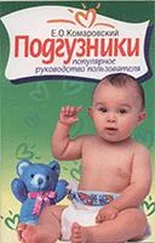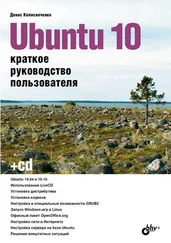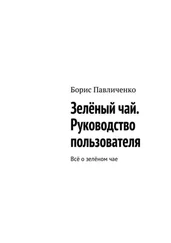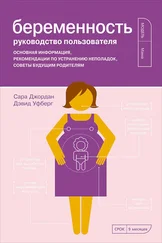S. J. Genuis et al., “Blood, Urine, and Sweat (BUS) Study: Monitoring and Elimination of Bioaccumulated Toxic Elements,” Archives of Environmental Contamination and Toxicology 61, no. 2 (2011): 344–357.
S. C. Segerstrom and G. E. Miller, “Psychological Stress and the Human Immune System: A Meta-analytic Study of 30 Years of Inquiry,” Psychological Bulletin 130, no. 4 (2004): 601.
D. S. Krantz and M. K. McCeney, “Effects of Psychological and Social Factors on Organic Disease: A Critical Assessment of Research on Coronary Heart Disease,” Annual Review of Psychology 53 (2002): 341–369.
C. Hammen, “Stress and Depression,” Annual Review of Clinical Psychology 1 (2005): 293–319.
R. J. Wright, M. Rodriguez, and S. Cohen, “Review of Psychosocial Stress and Asthma: An Integrated Biopsychosocial Approach,” Thorax 53, no. 12 (1998): 1066–1074.
M. F. Dallman et al., “Chronic Stress and Obesity: A New View of ‘Comfort Food,’” Proceedings of the National Academy of Sciences 100, no. 20 (2003): 11696–11701.
K. E. Wellen and G. S. Hotamisligil, “Inflammation, Stress, and Diabetes,” Journal of Clinical Investigation 115, no. 5 (2005): 1111.
J. Leserman et al., “Progression to AIDS, a Clinical AIDS Condition and Mortality: Psychosocial and Physiological Predictors,” Psychological Medicine 32, no. 6 (2002): 1059–1073.
J. Passchier and J. F. Orlebeke, “Headaches and Stress in Schoolchildren: An Epidemiological Study,” Cephalalgia 5, no. 3 (1985): 167–176.
M. A. Smith et al., “Oxidative Stress in Alzheimer’s Disease,” Biochimica et Biophysica Acta (BBA)-Molecular Basis of Disease 1502, no. 1 (2000): 139–144.
E. A. Mayer, “The Neurobiology of Stress and Gastrointestinal Disease,” Gut 47, no. 6 (2000): 861–869.
K. W. Davidson, E. Mostofsky, and W. Whang, “Don’t Worry, Be Happy: Positive Affect and Reduced 10-Year Incident Coronary Heart Disease: The Canadian Nova Scotia Health Survey,” European Heart Journal 31, no. 9 (2010): 1065–1070.
E. L. Worthington and M. Scherer, “Forgiveness Is an Emotion-Focused Coping Strategy that Can Reduce Health Risks and Promote Health Resilience: Theory, Review, and Hypotheses.” Psychology & Health 19, no. 3 (2004): 385–405; C. van Oyen Witvliet, T. E. Ludwig, and K. L. Vander Laan, “Granting Forgiveness or Harboring Grudges: Implications for Emotion, Physiology, and Health,” Psychological Science 12, no. 2 (2001): 117–123.
K. A. Lawler et al., “The Unique Effects of Forgiveness on Health: An Exploration of Pathways,” Journal of Behavioral Medicine 28, no. 2 (2005): 157–167.
M. E. McCullough et al., “Religious Involvement and Mortality: A Meta-analytic Review,” Health Psychology 19, no. 3 (2000): 211.
Y. Jia et al., “Does Night Work Increase the Risk of Breast Cancer? A Systematic Review and Meta-analysis of Epidemiological Studies,” Cancer Epidemiology 37 (2013): 197–206.
International Agency for Research on Cancer, IARC Monographs on the Evaluation of Carcinogenic Risks to Humans, Volume 98: Painting, Firefighting, and Shiftwork (Lyon, France: International Agency for Research on Cancer, 2007).
G. C. Brainard, R. Kavet, and L. I. Kheifets, “The Relationship between Electromagnetic Field and Light Exposures to Melatonin and Breast Cancer Risk: A Review of the Relevant Literature,” Journal of Pineal Research 26, no. 2 (1999): 65–100; R. G. Stevens et al., “Breast Cancer and Circadian Disruption from Electric Lighting in the Modern World,” CA: A Cancer Journal for Clinicians 64 (2014): 207–218.
E. E. Flynn-Evans et al., “Total Visual Blindness Is Protective against Breast Cancer,” Cancer Causes and Control 20, no. 9 (2009): 1753–1756.
M. Cohen, M. Lippman, and B. Chabner, “Pineal Gland and Breast Cancer,” The Lancet 2, no. 8104–8105 (December 1978): 1381–1382.
I. Kloog et al., “Light at Night Co‐distributes with Incident Breast but Not Lung Cancer in the Female Population of Israel,” Chronobiology International 25, no. 1 (2008): 65–81. Глава шестая. Какие факторы риска невозможно контролировать? Есть ли они у вас?
L. M. Sánchez-Zamorano et al., “Healthy Lifestyle on the Risk of Breast Cancer,” Cancer Epidemiology, Biomarkers and Prevention 20, no. 5 (2011): 912–922.
L. A. Brinton et al., “Anthropometric and Hormonal Risk Factors for Male Breast Cancer: Male Breast Cancer Pooling Project Results,” Journal of the National Cancer Institute 106, no. 3 (March 2014): djt465; K. J. Ruddy and E. P. Winer, “Male Breast Cancer: Risk Factors, Biology, Diagnosis, Treatment, and Survivorship,” Annals of Oncology 24, no. 6 (2013): 1434–1443.
M. Pierce and R. Hardy, “Commentary: The Decreasing Age of Puberty – As Much a Psychosocial as Biological Problem?” International Journal of Epidemiology 41, no. 1 (2012): 300–302.
M. E. Herman-Giddens et al., “Secondary Sexual Characteristics and Menses in Young Girls Seen in Office Practice: A Study from the Pediatric Research in Office Settings Network,” Pediatrics 99, no. 4 (1997): 505–512.
M. M. Grumbach, “Puberty: Ontogeny, Neuroendocrinology, Physiology, and Disorder,” Williams Textbook of Endocrinology (1998): 1509–1625.
S. J. Jordan, P. M. Webb, and A. C. Green, “Height, Age at Menarche, and Risk of Epithelial Ovarian Cancer,” Cancer Epidemiology, Biomarkers and Prevention 14 (2005): 2045–2048.
M. B. Pierce and D. A. Leon, “Age at Menarche and Adult BMI in the Aberdeen Children of the 1950s Cohort Study,” American Journal of Clinical Nutrition 82 (2005): 733–798.
M. B. Pierce, D. Kuh, and R. Hardy, “The Role of BMI across the Life Course in the Relationship between Age at Menarche and Diabetes, in a British Birth Cohort,” Diabetic Medicine 29, no. 5 (May 2012): 600–603.
G. C. Patton and R. Viner, “Pubertal Transitions in Health,” The Lancet 369, no. 9567 (March 2007): 1130–1139.
M. B. Pierce, D. Kuh, and R. Hardy, “Role of Lifetime Body Mass Index in the Association between Age at Puberty and Adult Lipids: Findings from Men and Women in a British Birth Cohort,” Annals of Epidemiology 20, no. 9 (September 2010): 676–682.
M. R. Palmert et al., “Is Obesity an Outcome of Gonadotropin-Releasing Hormone Agonist Administration? Analysis of Growth and Body Composition in 110 Patients with Central Precocious Puberty,” Journal of Clinical Endocrinology and Metabolism 84, no. 12 (1999): 4480–4488; F. Massart et al., “How Do Environmental Estrogen Disruptors Induce Precocious Puberty?” Minerva Pediatrica 58, no. 3 (2006): 247–254.
Читать дальше
![Кристи Фанк Грудь. Руководство пользователя [litres] обложка книги](/books/392018/kristi-fank-grud-rukovodstvo-polzovatelya-litre-cover.webp)











